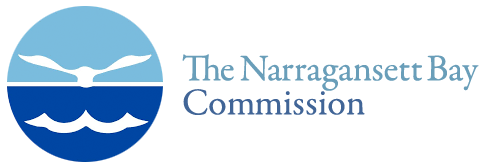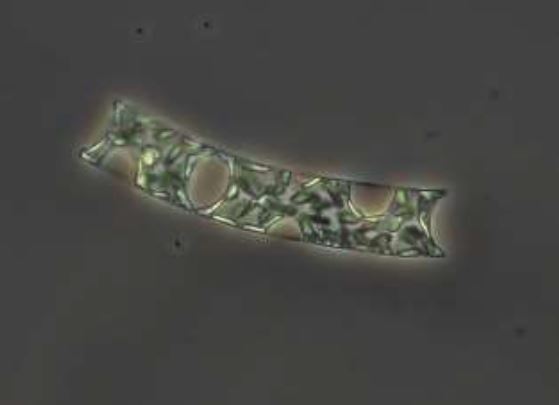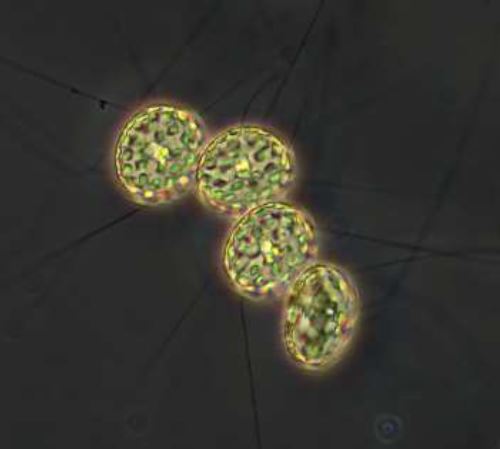May 29, 2024
Phytoplankton samples were collected on May 29, 2024 at Bullock Reach and analyzed in the laboratory shortly after collection.
Sonde data revealed the surface water temperature was 20.1°C, salinity was 15.49 psu, and chlorophyll a was 12.1 ug/L.
The qualitative tow net sample had a moderate filtration time, and the filtrate was a dark tan/brown color and had particulate matter.
The analysis of the quantitative whole water sample revealed a total of 7,565,000 cells per Liter. The most predominant phytoplankton genus was Skeletonema spp. at 7,276,000 cells/L. Other representative genera include Chaetoceros spp. and Leptocylindrus spp. Chaetoceros spp. (see 200x phase contrast image below) is a genus of diatoms found in Narragansett Bay and is one of the most common and most diverse genera of marine planktonic diatoms with over 200 accepted species. Due to its high growth rates, research has been conducted into potential uses of Chaetoceros in biotechnology.









